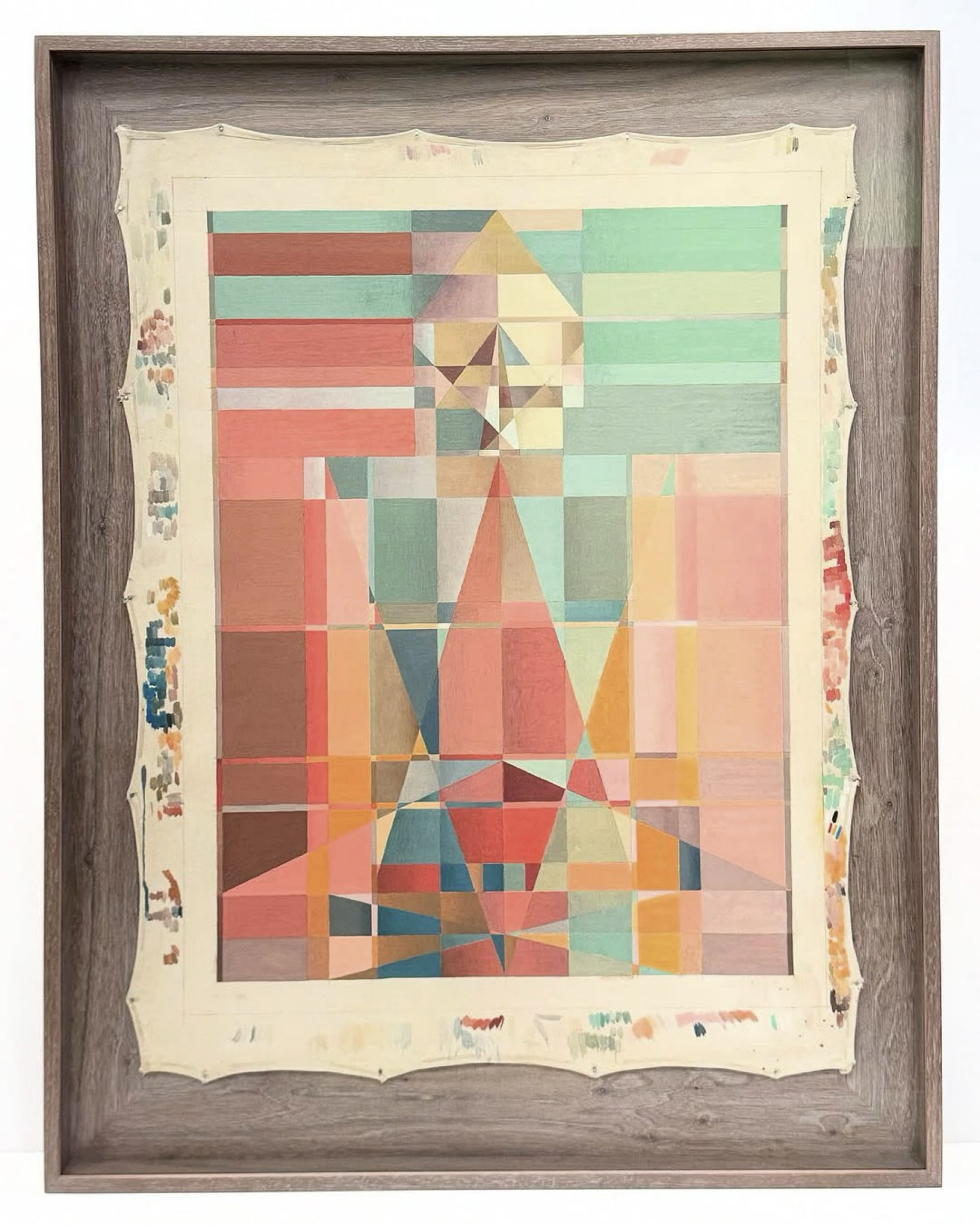
Medium: Ground natural mineral pigments and vegetable/insect dyes and animal glue sizing on canvas, custom frame
Dimensions: 26" x 30" x 2"
Price: $18000.0
Description: After painting my first Hidden Geometries painting using classical thangka techniques of mineral pigments and bovine glues in Nepal, I returned to my Berkeley, California studio to begin working in this ancient style. My friends at Enlightenment Studio had shared with me mortise and tenon stretcher bars, special stones for preparing the canvas, and—perhaps my favorite of the tools I returned with—brushes made from Nepali wildcat hair that hold mineral pigments and vegetable dyes particularly well. The result was this painting: Protector of the World (Nondual). The geometry of the painting comes from the grid laid down for centuries that guides the hand of traditional thangka painters. The colors come from special software I wrote that refracts the colors of a low-resolution sampled thangka through my own algorithm. The process is meant to convey the dynamic state of the meditator while contemplating the imagined figure of a Buddha. For most yogis, these images are blurry and shifting. This, my teachers have told me, is perfectly fine. Another way to understand these images is within the context of the "three bodies" of Vajrayana Buddhism. Between an immaterial mental "body" and our physical body is an energy body known as the Sambhogakaya. This I also suggest in these paintings, as it relates to speech, art, creativity, exercise, dance, and other ways in which we connect body and mind. Around the edges of the painting you can see small marks. Because mineral colors dry in different shades, you need to paint swatches along the edge of the canvas and let them dry to assess their color. This series is all about revealing process, so it made sense to leave these aspects of the painting process visible in the final work too. Friends at Enlightenment approved of the idea, telling me that the marks around the edge of the frame convey the "thoughts and feelings" of the artist.